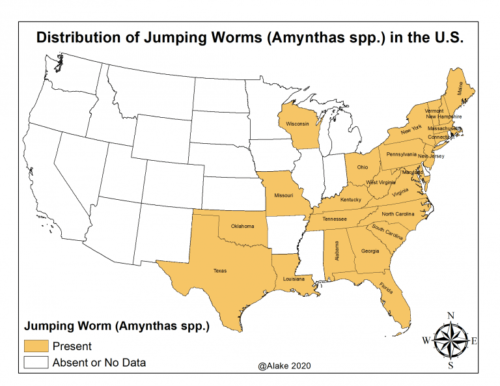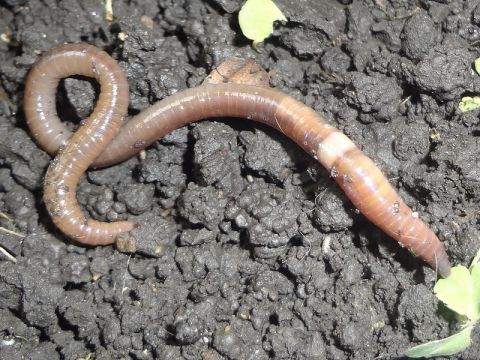
The hotline has been getting questions about jumping worms (Amynthas spp.) The worms are an invasive species native to East-central Asia. The invasion that started in the upper mid-west has made it’s way to Tennessee and beyond. Gardeners should know how to identify them, what damage they cause and what can be done to help stop the spread.
The easiest way to identify a jumping worm is its behavior. When disturbed, they jump, wiggle and move swiftly across the ground like a snake. The worms have a gray to brownish color, a smooth outer coat and a white band (clitellum) that is flush to its body and encircles the entire worm.
Jumping worms are ravenous feeders. They eat leaf litter, mulch and other organic matter and excrete hard pellets that resemble coffee grounds. The resulting soil lacks the nutrients that plants, animals, fungi and bacteria need to survive. They also will damage roots when feeding, often killing the plants.
Unfortunately, there is no chemical or biological treatment available. Prevention is the only way to stop the spread. Here are some things you can do:
- Do not use jumping worms for bait or vermicomposting.
- Only use heat-treated commercial compost or mulch. Proper heating will kill the worm eggs and weed seeds.
- Carefully inspect any new plants, especially plants that are not from nurseries.
- For shared plants, remove all the soil roots by completely submerging plant roots in water.
- If you have them, do not share plants. Be sure to completely remove soil if moving plants around your yard.
- Destroy any worms you catch. Placing them in a plastic bag in the sun will do the trick.
For more information on jumping worms see:
- Invasive Species Update – Illinois Extension
- Jumping Worms – University of Minnesota Extension
- Jumping worms: Beware of plant swap hitchhikers – University of Minnesota Extension


